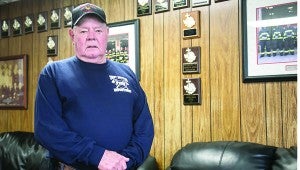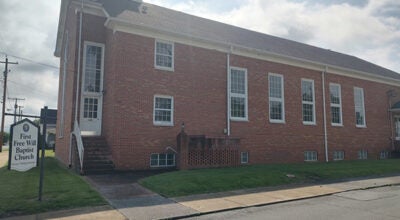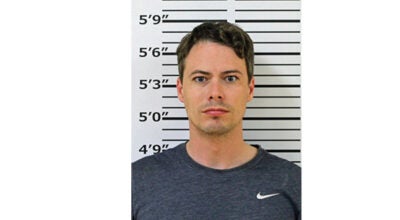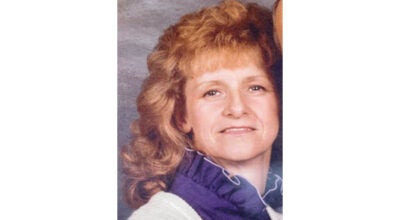Fire chief makes call to take on new role
Published 10:38 am Monday, March 23, 2015
After serving as chief of the West Carter County Volunteer Fire Department for 44 years, Conley Jones has decided it is time to retire as leader of the department.
But that doesn’t mean he is leaving; Jones will still be responding to calls in his new position with the crew as department videographer.
“I will still be running all the calls,” Jones said. “I will be making videos of all the calls for training. I can’t respond anymore and work the fires; driving the trucks and pulling the hoses. I will be there to do what I can.”
His tenure with the Milligan area fire department will be celebrated during a cookout at the department today at 5 p.m. The gathering is also a birthday party of sorts — Jones turns 83 on Sunday.
Jones helped start the volunteer fire department in 1970 after his barn caught fire and was destroyed. While working as a volunteer firefighter, he kept a full-time job in auto parts for 36 years.
“We didn’t have a fire department at the time,” he said. “I had a barn, and some ponies that I had traded for a steer. I think the electric fence sparked something and it started the fire and burned down the barn.”
Shortly afterwards, Jones was approached by the Optimist Club about starting a volunteer fire department because of his experience as president of the CB radio club.
“They came to me and said they were starting a fire department and asked if I thought any of the CB club members would join,” Jones said. “They said they would do the fundraising for us. I told them I would try and 10 or 15 men came with me.”
The department opened its first fire hall in a house on Milligan College’s campus. The first chief was Dick Stoughton, who served for around a year before Jones was named chief in June 1971.
The West Carter department worked with Capt. Clarence Eads with the Johnson City Fire Department to train and get ready for the job they would have to do.
The first fire call for the department was one for a “big new house” that had just been constructed in the department’s coverage area. The call turned out to be minor — an electrical malfunction in a light switch — but the homeowner, Luther Hubbard ended up joining the department.
“We got up there and put it out and we thought we were the greatest thing,” Jones said. “We were friends with the Hubbards and they offered to cook us something if we agreed to stay. We ended up hanging out there until around 8 in the morning.”
Hubbard worked in construction and built the department its current station in 1974.
“He built a lot of houses and he helped build this,” Jones said. “He was able to build it using a lot of donations; we only had to pay for the doors and the windows.”
The department has seen many improvements over the years, Jones said. The department started out with one truck, a 1953 Ford with a 500-gallon tank.
“It could barely pull itself up the hill but it was what we had,” he said.
The need for a tanker trunk became more apparent when the department was called to a fire at Vest’s Greenhouse. The department had to keep making runs back to a hydrant on Milligan Highway to fill the smaller tank on the truck.
“I said boys, you can’t put out a fire without water,” Jones said.
The department called on the Hampton/Valley Forge Volunteer Fire Department to bring their tanker to the fire.
“They said it leaked, but we told them to bring it over,” Jones said. “We filled it up and took it to the greenhouse. We tried what we could, even getting water out of a creek because there are no hydrants out there.”
Jones called a meeting with the department and a new tanker truck was approved. The department purchased a 2,500-gallon tanker that had previously been used by an oil company.
“It had a six-cylinder engine,” Jones said. “It worked. It just took it some time to get there.”
Now, the department has all new vehicles, equipment and turnout gear. The department relies on funding from the county, donations and state grants to help meet all their needs.
“Everyone has been real good to us,” Jones said. “When we started we had three sets of turnout gear, and whoever got to the scene first got them. We have come a long way. A lot of hard work has been put in the department. It has all been enjoyable.”
Because the department is located in Milligan between Elizabethton and Johnson City, the volunteers have helped out on some of the bigger fires in the area, including the North American Rayon and Bemberg fires in Elizabethton and the John Sevier apartment fire in Johnson City.
“The John Sevier fire was the worst,” Jones said. “Eighteen people died in that one. I was watching television and they began to call for all the firefighters and police to report, and I thought something bad is going on.”
Volunteering with the department has been a family affair for Jones. His late wife, Loraine, helped out as a dispatcher in the earlier days before 911 was formed. The department had a “fire phone” at the station and at Jones’ house.
“She was just as dedicated as I was,” Jones said. “Her friends would come to see her at the house because they knew she wasn’t going anywhere.”
His sons Danny and David are members of the department. David has served as assistant chief and will be taking over as chief when his father retires.
“David has been doing all the work so it’s only right he becomes chief,” Jones said. “I am 83 years old. I don’t need to be chief anymore. I can help in other ways.”
In addition to videoing the fire calls, Jones checks in at the station during the day while other volunteers are at work, helping with maintenance and yard work in the summer.
“I have enjoyed doing this over the years,” he said. “It has been real satisfying helping people. It is like it is a calling for me.”






